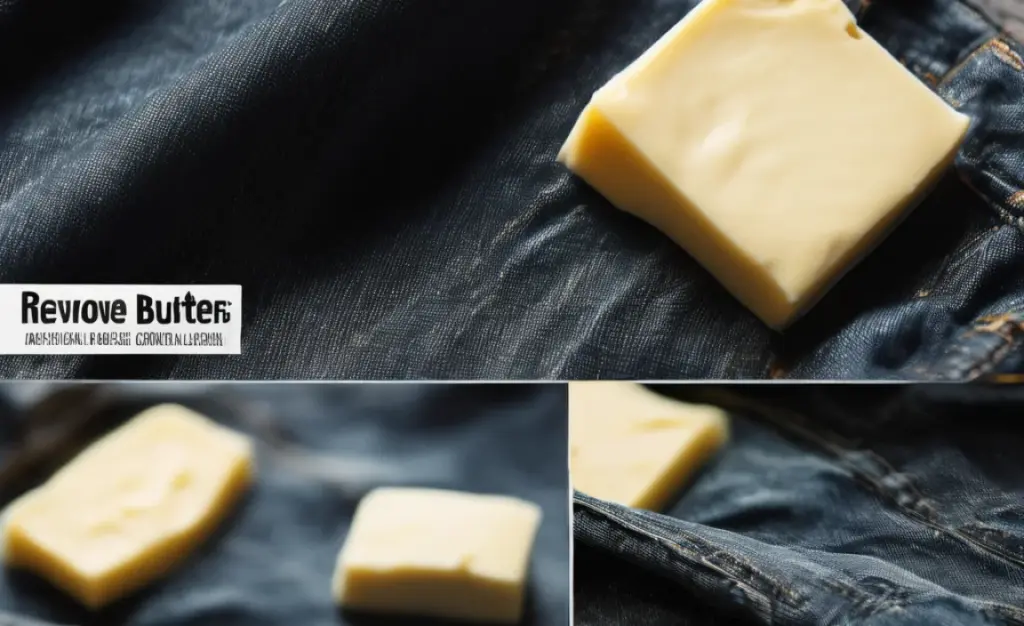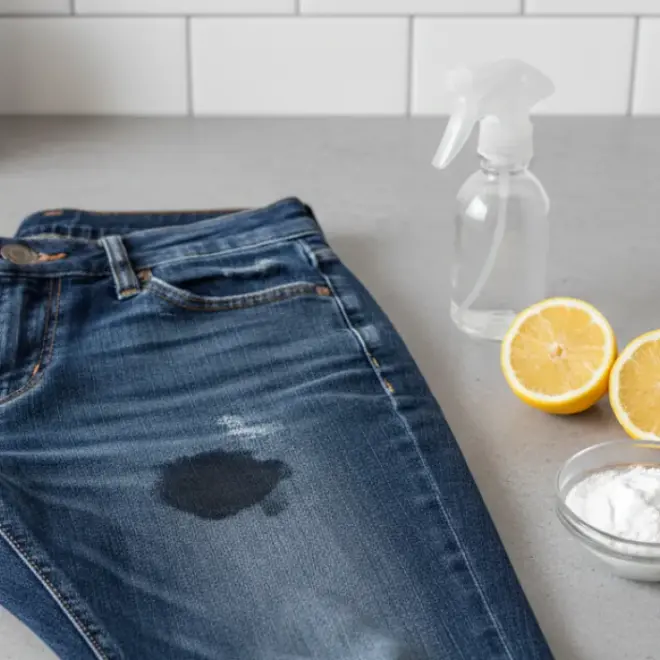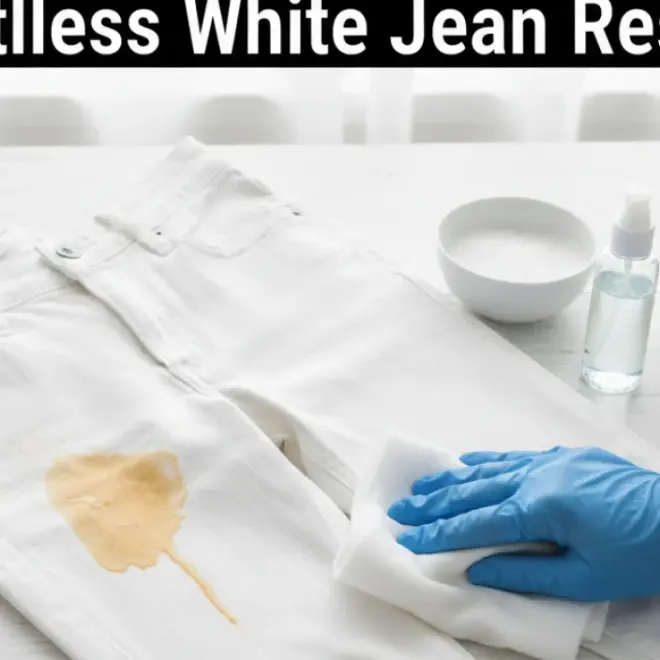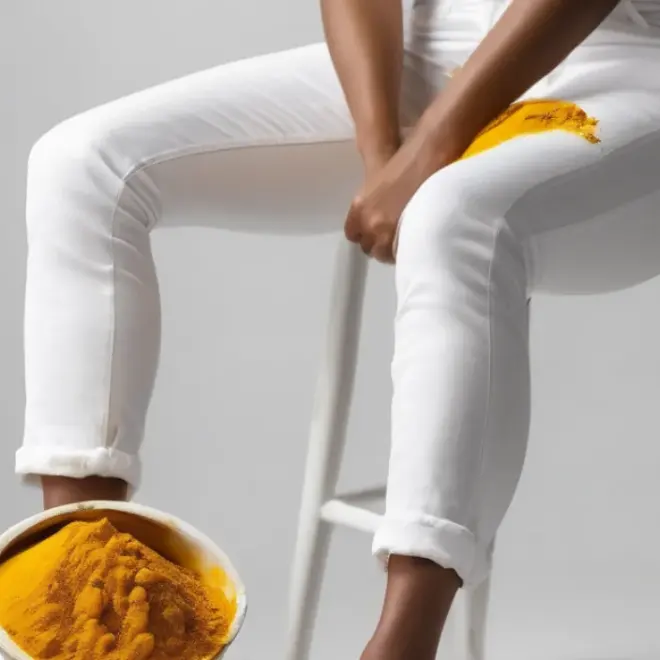Quick Summary: To effectively remove butter from black jeans, act fast by gently blotting the grease with a clean cloth, then pre-treat with a stain remover or a paste of baking soda and water before washing as usual. This guide provides simple, proven methods to restore your favorite jeans.
Oh no, butter on your favorite black jeans! It happens to the best of us, whether it’s a rogue dollop from a sandwich or a spill during a movie night snack. Black denim is stylish and versatile, but grease stains can be particularly noticeable and frustrating, especially when you just want to get on with your day. Don’t worry, tackling this common clothing mishap is easier than you might think. This guide will walk you through quick, effective, and beginner-friendly steps to get that buttery blotch out, leaving your jeans looking as good as new.
Why Butter Stains Can Be Tricky
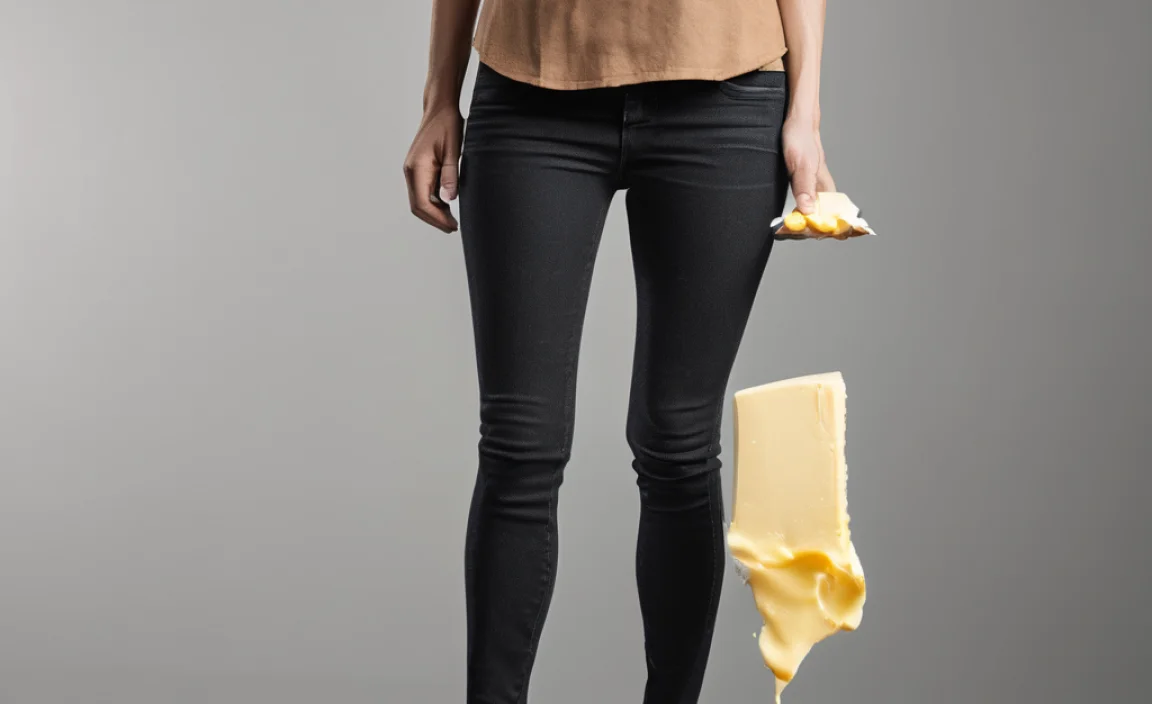
Butter, like other cooking oils and fats, is a type of grease. Grease stains are often stubborn because oil molecules tend to bind to fabric fibers, making them difficult to wash away with plain water. Black fabric can sometimes make these lighter-colored stains appear even more prominent, creating a sense of urgency to remove them. The good news is that with the right approach and a bit of swift action, you can successfully lift these stains without damaging your black jeans.
Understanding the Science Behind Stain Removal

Removing grease stains from clothing relies on a few key principles. Water alone isn’t effective because oil and water don’t mix. You need something to break down the grease so it can be lifted from the fabric and washed away. Detergents and certain household items work by emulsifying the grease, meaning they surround the oil molecules and allow them to dissolve in water. Absorbents, like cornstarch or baking soda, work to soak up excess grease before it sets deeply into the fibers.
The key to success for any grease stain removal, especially on dark fabrics like black jeans, is to:
- Act quickly: The fresher the stain, the easier it is to remove.
- Blot, don’t rub: Rubbing can spread the stain and push it deeper into the fabric.
- Use the right agents: Harness the power of degreasers and absorbents.
- Rinse and repeat if necessary: Patience is a virtue when dealing with tough stains.
Essential Tools and Supplies
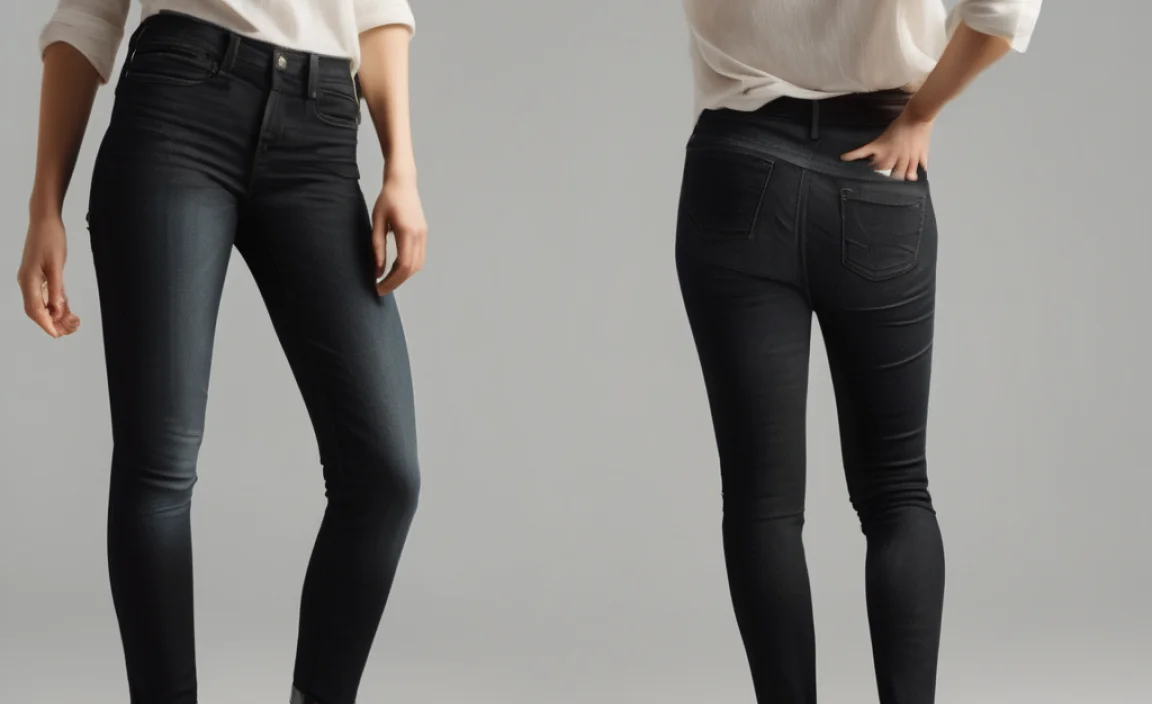
Before you start, gather a few common household items. Having them on hand will make the process smooth and efficient. Most of these are probably already in your kitchen or laundry room.
- Clean, absorbent cloths or paper towels
- A dull knife or spoon (for scraping off excess butter)
- Cornstarch, baking soda, or talcum powder (for absorption)
- Liquid laundry detergent (preferably one designed for tough stains) or a dedicated stain remover
- An old toothbrush or soft scrubbing brush
- Your regular laundry detergent
- Access to a washing machine and dryer
Step-by-Step Guide to Removing Butter Stains
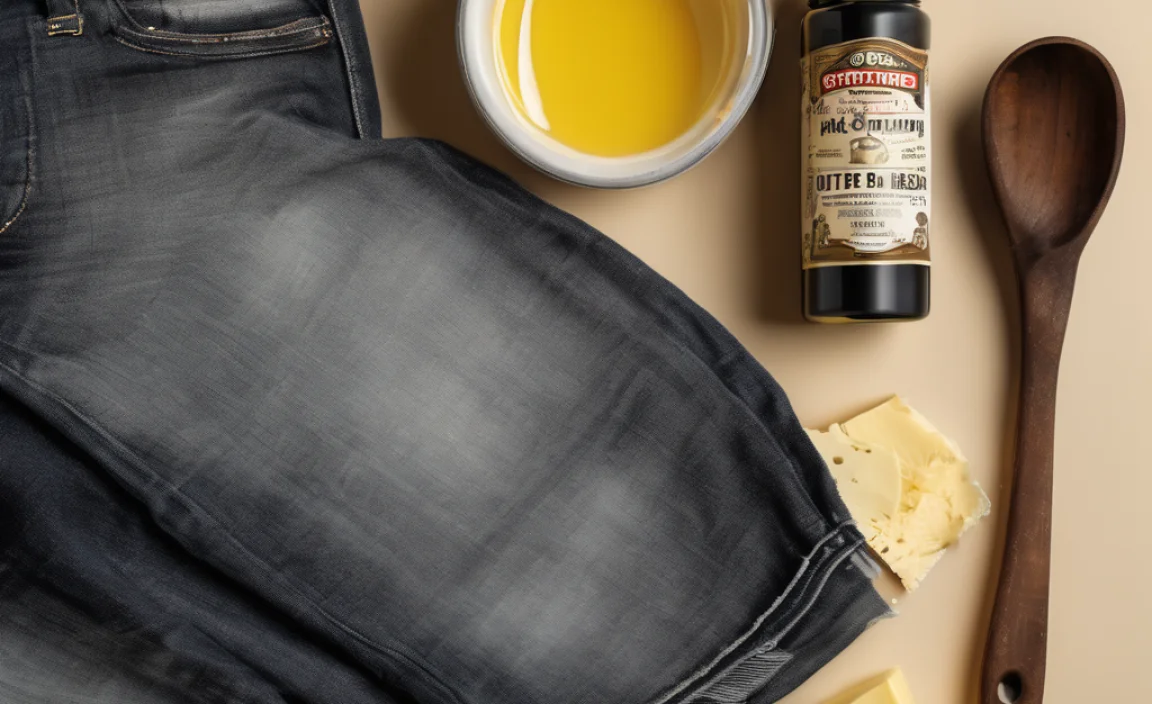
Let’s get those black jeans looking their best again. Follow these simple steps carefully for the best results.
Step 1: Remove Excess Butter Immediately
The very first thing to do is to gently scrape off as much of the surface butter as possible. Use the dull side of a knife or a spoon. Be careful not to spread the butter further into the fabric. The goal here is simply to remove any thick, excess amount that hasn’t yet soaked in.
Step 2: Blot the Greasy Area
Take a clean, dry cloth or paper towel and gently blot the stained area. Press down firmly but carefully. You want to absorb as much of the remaining surface grease as possible without rubbing or smearing it. Continue blotting with fresh sections of the cloth until no more grease transfers to it. This step is crucial for preventing the stain from spreading.
Step 3: Apply an Absorbent Powder
Now it’s time to draw out the grease that has already penetrated the fabric. Generously sprinkle an absorbent powder like cornstarch, baking soda, or even talcum powder directly onto the affected area. These powders are excellent at soaking up oil. Let the powder sit on the stain for at least 30 minutes, or ideally, for a few hours. For significant stains, you can even leave it overnight.
- Cornstarch: Finer grain, excellent absorption.
- Baking Soda: Also a good absorbent and has mild deodorizing properties.
- Talcum Powder: Similar absorbency; ensure it’s plain, unscented if possible.
Step 4: Brush Away the Powder
Once the absorbent powder has had time to work, gently brush it away. Use a soft brush or a dry cloth. You should see that the powder has clumped up, taking some of the grease with it. You might need to repeat steps 3 and 4 if the stain is still very visible.
Step 5: Pre-Treat the Stain
After removing the powder, you’ll likely still have a faint mark. Now it’s time for a pre-treatment. Apply a small amount of liquid laundry detergent directly onto the stained area. Gently rub it into the fabric with your fingers or a soft toothbrush. Alternatively, you can use a commercial stain remover specifically designed for grease and oil. Look for products with enzymes, as these are particularly effective at breaking down organic stains. Allow the detergent or stain remover to sit on the stain for about 5-10 minutes.
For a natural alternative, you can create a paste from baking soda and a little water. Apply this paste to the stain, let it sit for 10-15 minutes, then gently scrub with a soft brush.
Step 6: Wash Your Jeans
Now, it’s time to wash your black jeans. Check the care label on your jeans for the recommended washing temperature. Ideally, wash them in the hottest water safe for the fabric. Use your everyday laundry detergent, and consider adding an extra boost of stain-fighting power if you have it.
Wash the jeans along with other dark-colored items to prevent any color bleeding. Do not wash them with whites.
Step 7: Check the Stain Before Drying
This is a critical step. After the wash cycle is complete, before you put your jeans in the dryer, carefully inspect the stained area. If the stain is still visible, even faintly, do NOT put the jeans in the dryer. The heat from the dryer will set the stain permanently, making it much harder, if not impossible, to remove.
Step 8: Repeat if Necessary
If the stain persists, repeat steps 3 through 7. You might need to try a different pre-treatment agent or let the absorbent powder and pre-treatment sit for longer.
Step 9: Air Dry or Tumble Dry (if stain is gone)
Once you are confident that the butter stain is completely GONE, you can proceed to dry your jeans. For best results with dark fabrics, air drying or tumble drying on a low heat setting is recommended to preserve the color and integrity of the denim. Hang them on a drying rack or a clothesline until they are fully dry.
Alternative Methods for Stubborn Stains
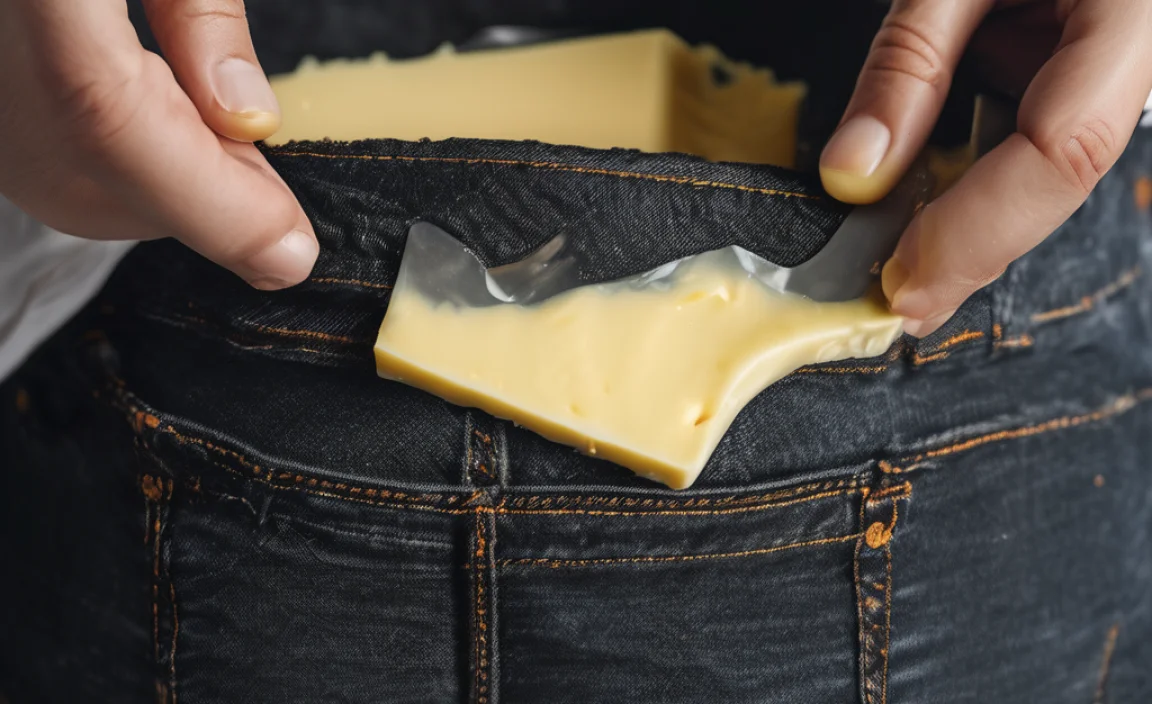
If the basic steps don’t completely remove the butter stain, or if the stain is older and has had time to set, you might need to try a more intensive method. Always patch-test these on an inconspicuous area of your jeans first.
Dish Soap Power
Liquid dish soap is formulated to cut through grease and oil. Apply a few drops of a good quality dish soap (like Dawn) directly onto the remaining stain. Gently rub it in with your fingers or a soft brush. Let it sit for 10-15 minutes, then rinse thoroughly before washing as usual.
Rubbing Alcohol or Hairspray (Use with Caution)
Rubbing alcohol can sometimes help break down grease. Dab a small amount onto a clean cloth and then gently blot the stain. Hairspray, particularly older types containing alcohol, can also have a similar effect. However, be very careful with these methods as they can potentially affect the dye of your black jeans, leading to a lighter patch or discoloration. Always test in a hidden spot first and use sparingly.
For more information on fabric care and stain removal, the Cotton Incorporated website offers extensive resources on handling various types of stains on cotton fabrics, which is the primary component of most denim.
What to Avoid When Removing Butter Stains
To ensure you don’t make the problem worse, keep these points in mind:
- Don’t rub vigorously: This spreads the stain and damages the denim fibers.
- Don’t use bleach: Chlorine bleach will likely damage the black dye and the fabric.
- Don’t put stained jeans in the dryer: Heat sets grease stains.
- Don’t use hot water on fresh stains: For some stains, hot water can set them. Stick to cool or lukewarm for initial treatment unless specified by a stain remover.
- Don’t apply heat directly: Avoid using an iron directly on the stain before it’s fully removed.
Preventing Future Butter Stains
While accidents happen, a few simple habits can help minimize the risk of butter stains on your black jeans.
- Mindful eating: Be aware of your surroundings and what you’re eating, especially in your favorite clothes.
- Use napkins: Always use a napkin when eating buttery foods.
- Pre-treat potential problem areas: For very active lifestyles, consider occasionally treating inner thigh or knee areas with a fabric protector spray.
- Invest in aprons: Use an apron when cooking or doing messy activities.
Frequently Asked Questions (FAQ)
Q1: How quickly do I need to address a butter stain on black jeans?
The faster you act, the easier it will be to remove the stain. Ideally, treat it within minutes of the spill occurring.
Q2: Can I use baby powder to remove butter stains?
Yes, baby powder, like cornstarch or talcum powder, is an absorbent and can help draw grease out of the fabric. Apply it generously, let it sit, and then brush it off.
Q3: What if the stain is old and dried?
Older, dried stains are tougher. You’ll likely need to pre-treat them multiple times and potentially use a stronger stain remover. Soaking the stained area in warm water with detergent for a few hours before pre-treating can help loosen a dried stain.
Q4: Will dish soap take the color out of my black jeans?
Most clear or lightly colored dish soaps are safe for dark fabrics when used as a pre-treatment. However, always test on an inconspicuous area first and avoid harsh, colored detergents that could potentially stain.
Q5: How can I ensure the stain is completely gone before drying?
After washing, carefully inspect the affected area under good lighting. If any trace of the stain remains, do not dry the jeans in a machine dryer. Air dry them and reassess. You may need another round of treatment.
Q6: Can I use an iron to help remove the stain?
No, you should never iron a grease stain. The heat from the iron will set the grease into the fibers, making it much harder to remove. Always ensure the stain is completely gone before ironing your jeans.
Conclusion
Dealing with a butter stain on your black jeans doesn’t have to be a disaster. By acting quickly, blotting excess grease, using absorbent powders, and employing a good stain remover or detergent, you can effectively lift even stubborn grease marks. Remember the golden rule: never put stained garments in the dryer until you are absolutely certain the stain has vanished. With these straightforward steps and a little patience, your favorite black jeans can be saved, ready for you to wear with confidence again. Enjoy your perfectly clean denim!


